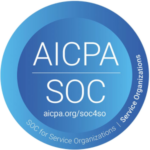In today’s competitive job market, employers must stand out from other employers to retain talent. In a world where as many as 50% of employees may require up-skilling or re-skilling in the next ten years [1] and many more employees are concerned about how the fast-changing needs of employers may make jobs less [stable], effective employee education programmes are a great way for employers to set themselves apart.
However, the overwhelming array of strategies available to accomplish this task makes selecting one option over another a formidable challenge. We believe that Return on Investment (ROI) is a crucial measure that employers should use to weigh the pros and cons of different initiatives and help them make decisions that promise the greatest financial returns.
What is Return on Investment (ROI)?
The Corporate Finance Institute (CFI) defines ROI as a financial ratio used to calculate the benefit an investor will receive in relation to their investment cost [2]:
ROI = (profit earned – investment) / investment x 100
As shown above, ROI quantifies an investment’s financial impact, allowing organizations to assess the financial benefits derived relative to its cost compared to alternatives.
Successful education programmes must not only enrich the employee experience but also demonstrate quantifiable returns that align with organizational objectives. There are many variables to consider when calculating the ROI of an employee education programme, which include:
One-time expenses: Content development, creating a Learning Management System, programme implementation, etc.
On-going expenses: Programme promotion, tracking participation and completion, identifying and implementing enhancements, etc.
Direct and indirect benefits an employer derives from an employee education programme.
The Returns from Employee Education Programmes
Employee education programmes bring direct and indirect upsides to organizations.
Direct upsides
These are more easily quantifiable and have a clear impact on the bottom line. Some examples include:
- Improved employee retention
- Reducing the costs associated with hiring new employees
- Reducing lost productivity as new employees come up to speed. [Estimated to be as much as 50% of an employee’s salary
- Enhanced productivity, which can lower operational costs, in addition to improving employee morale.
- Increased revenues due to higher skill levels and innovation.
Indirect benefits
While more difficult to quantify, these also impact an organization’s success and include:
A stronger employer brand that can increasingly differentiate employers by attracting better talent,
- An enhanced company culture that fosters loyalty and engagement,
- Increased adaptability supporting more rapid adaptation to changing business environments
Together, these direct and indirect benefits form a compelling case for the strategic value of education programmes.
Improving the ROI of an Employee Education Programme
There are several things that employers can do to increase the ROI of a specific employee education programme, which include: setting clear goals, tailoring training to actual employee needs, getting employee commitment to training, creating supportive environments for training and education, and measuring and analyzing results to ensure continuous programme improvements.
Conclusion
The strategic advantage of employee education benefits can be made very clear when viewed through the lens of ROI. By focusing on quantifiable outcomes, employers can ensure their investment in employee development yields tangible and intangible benefits, driving both individual growth and organizational success.
Investing in employee development is not just an expense. It is a strategic investment that pays dividends in the form of innovation, competitiveness, and resilience.
[1] https://initiatives.weforum.org/reskilling-revolution/home
[2] https://corporatefinanceinstitute.com/resources/accounting/return-on-investment-roi-formula/




